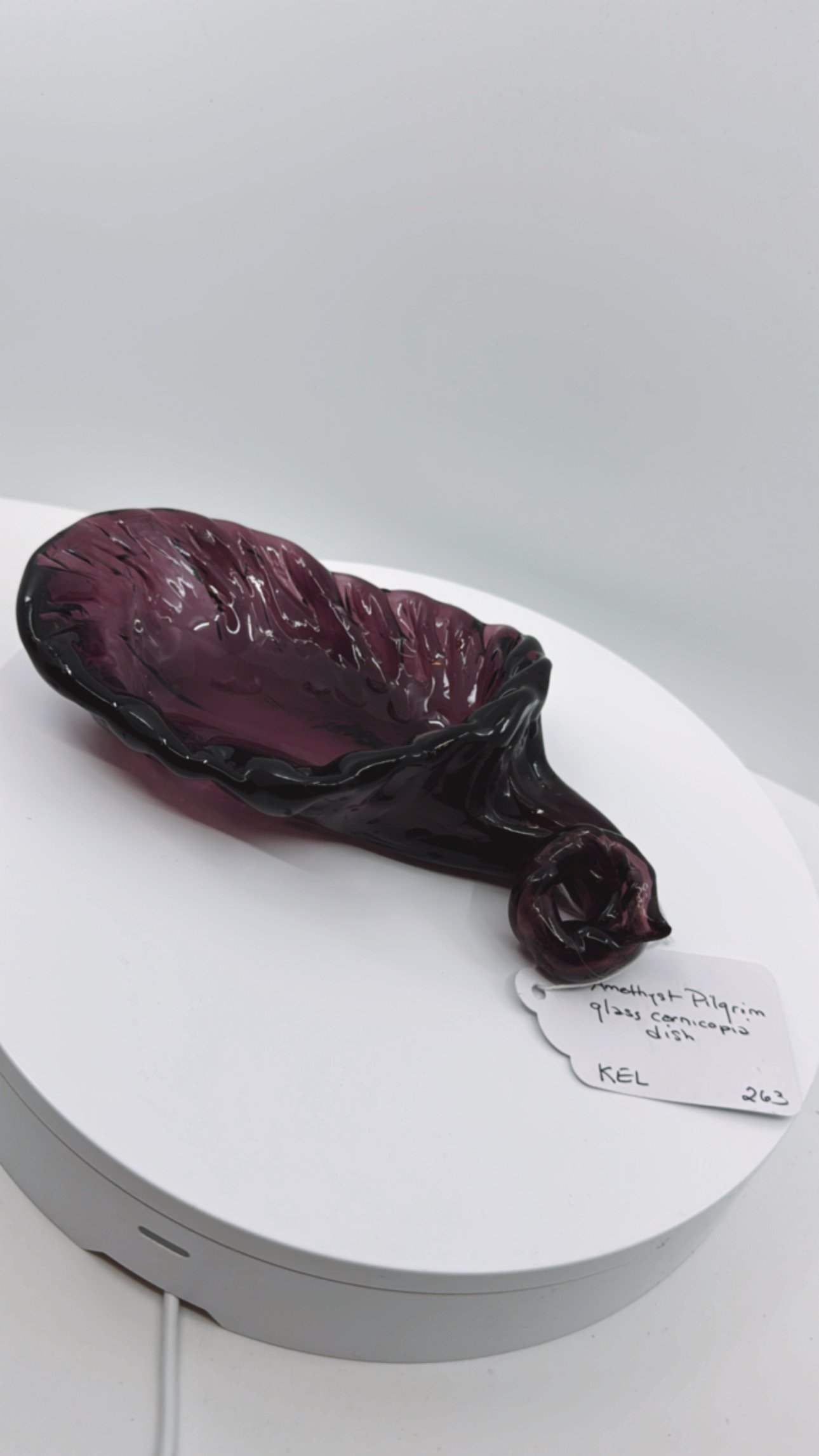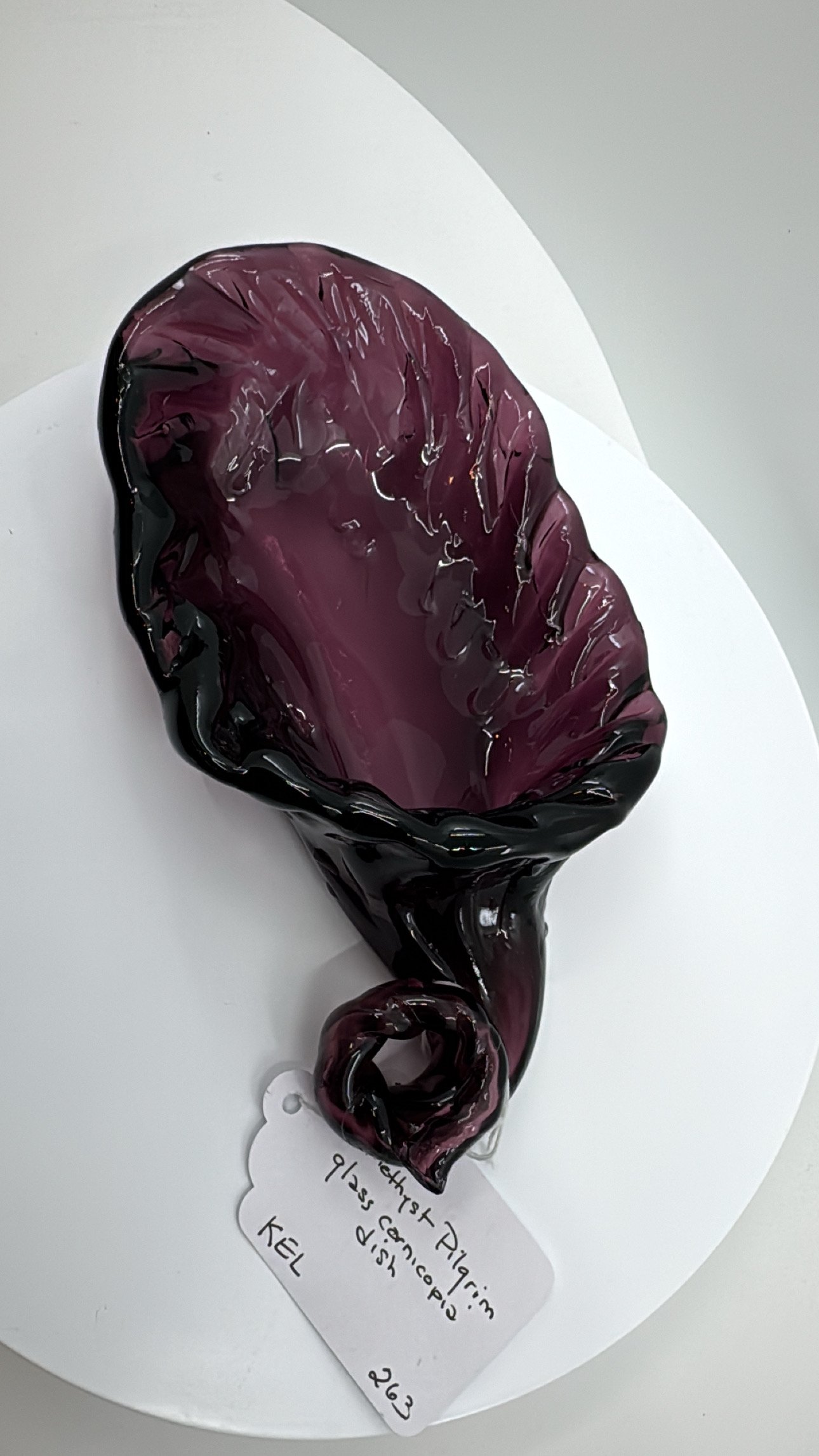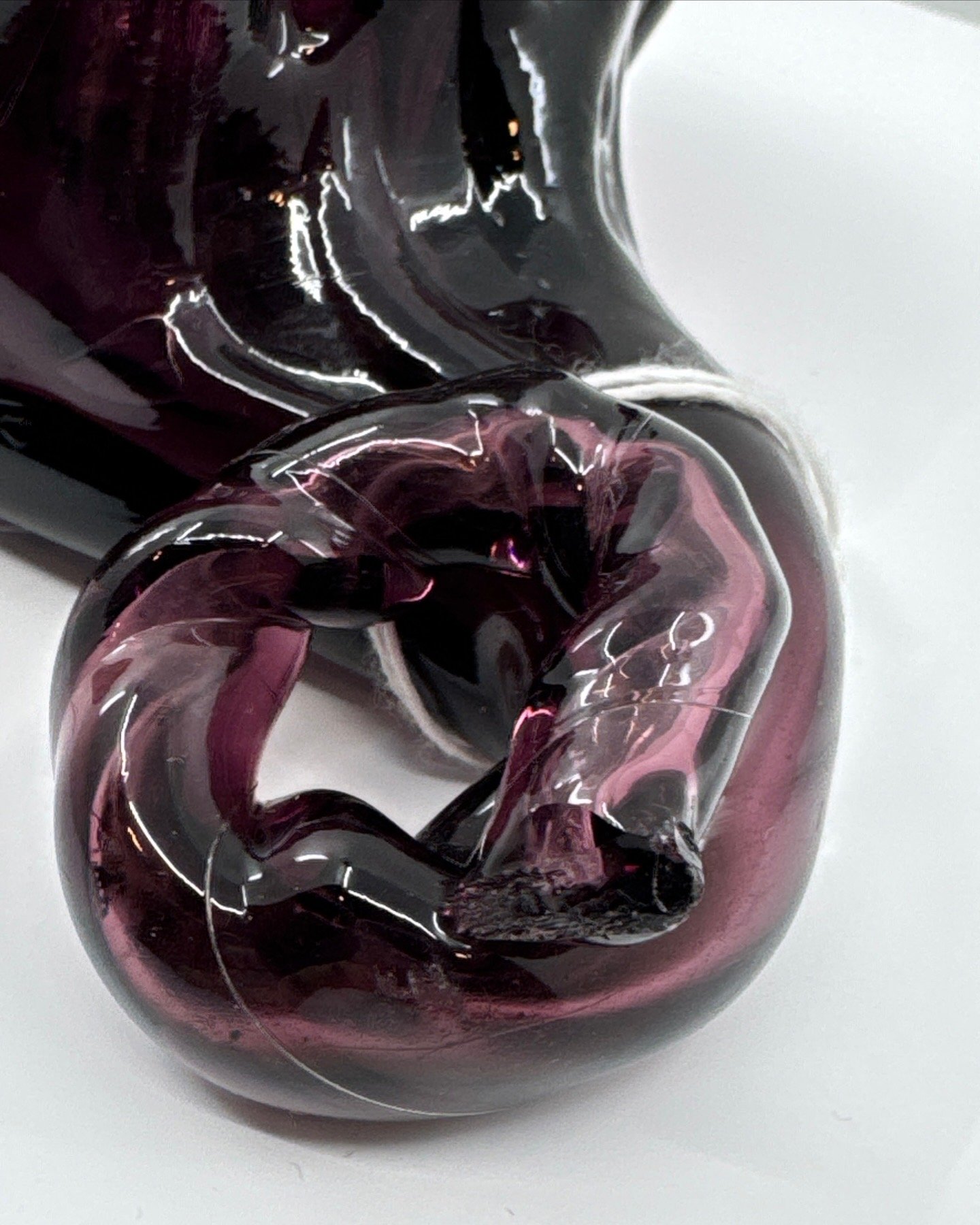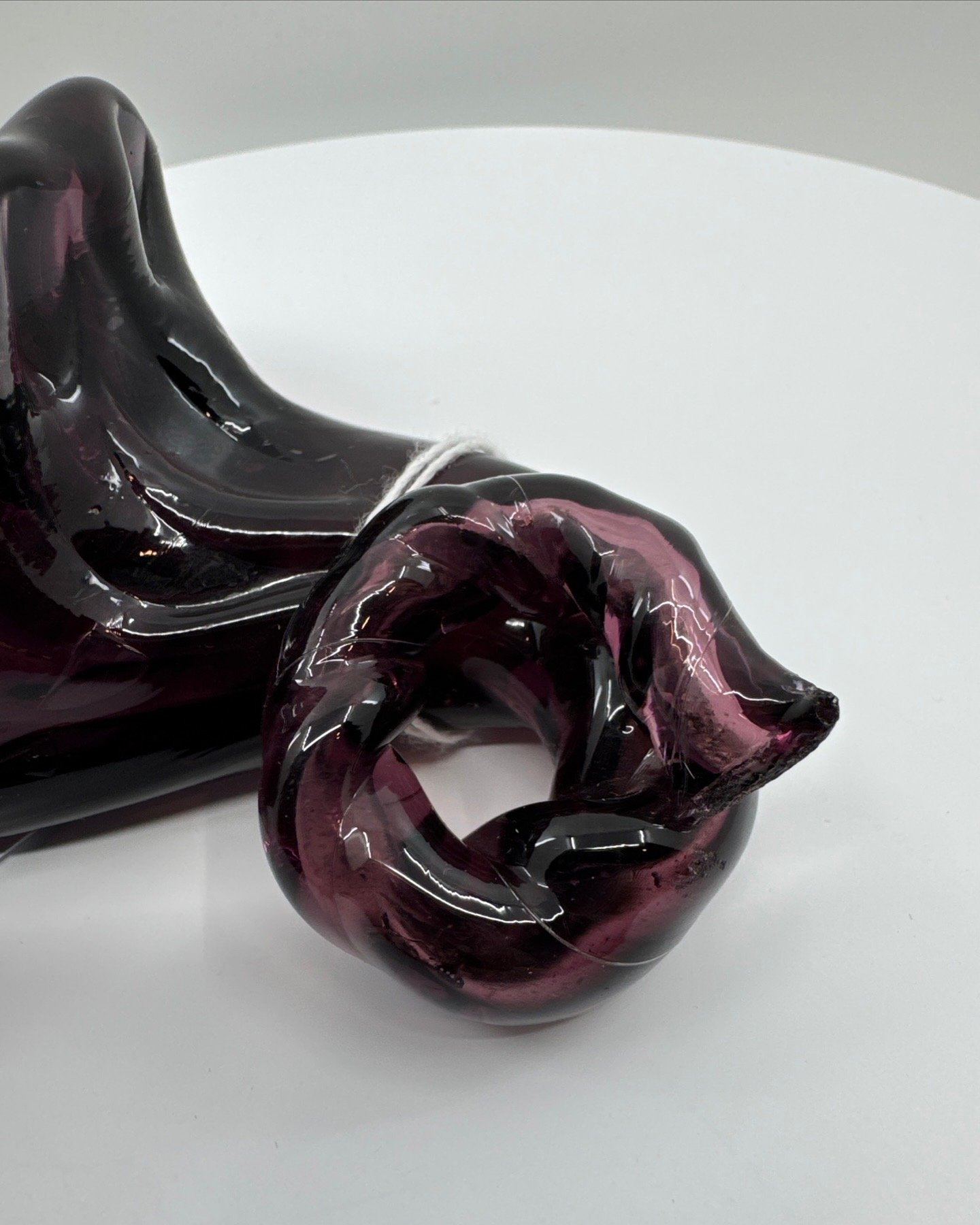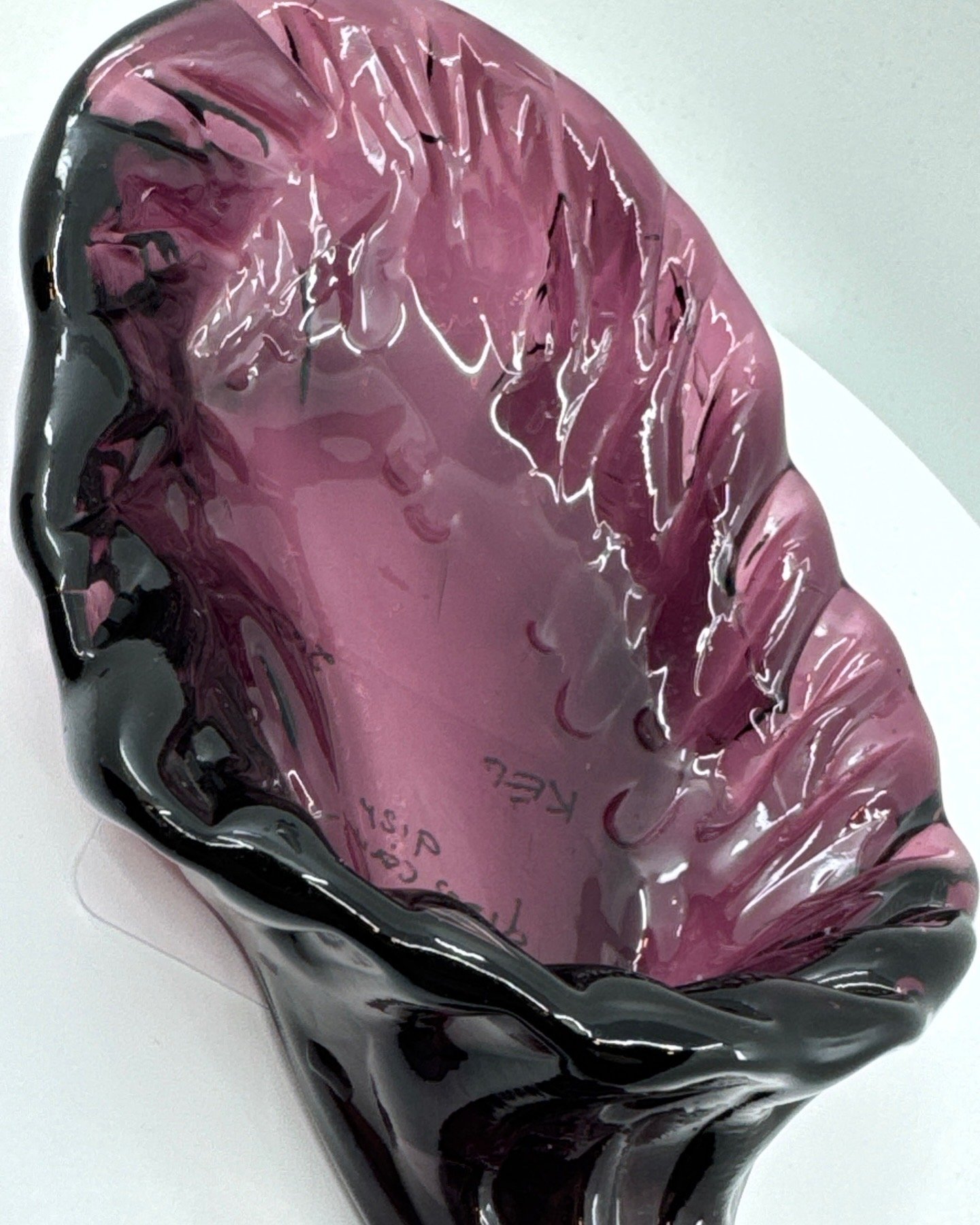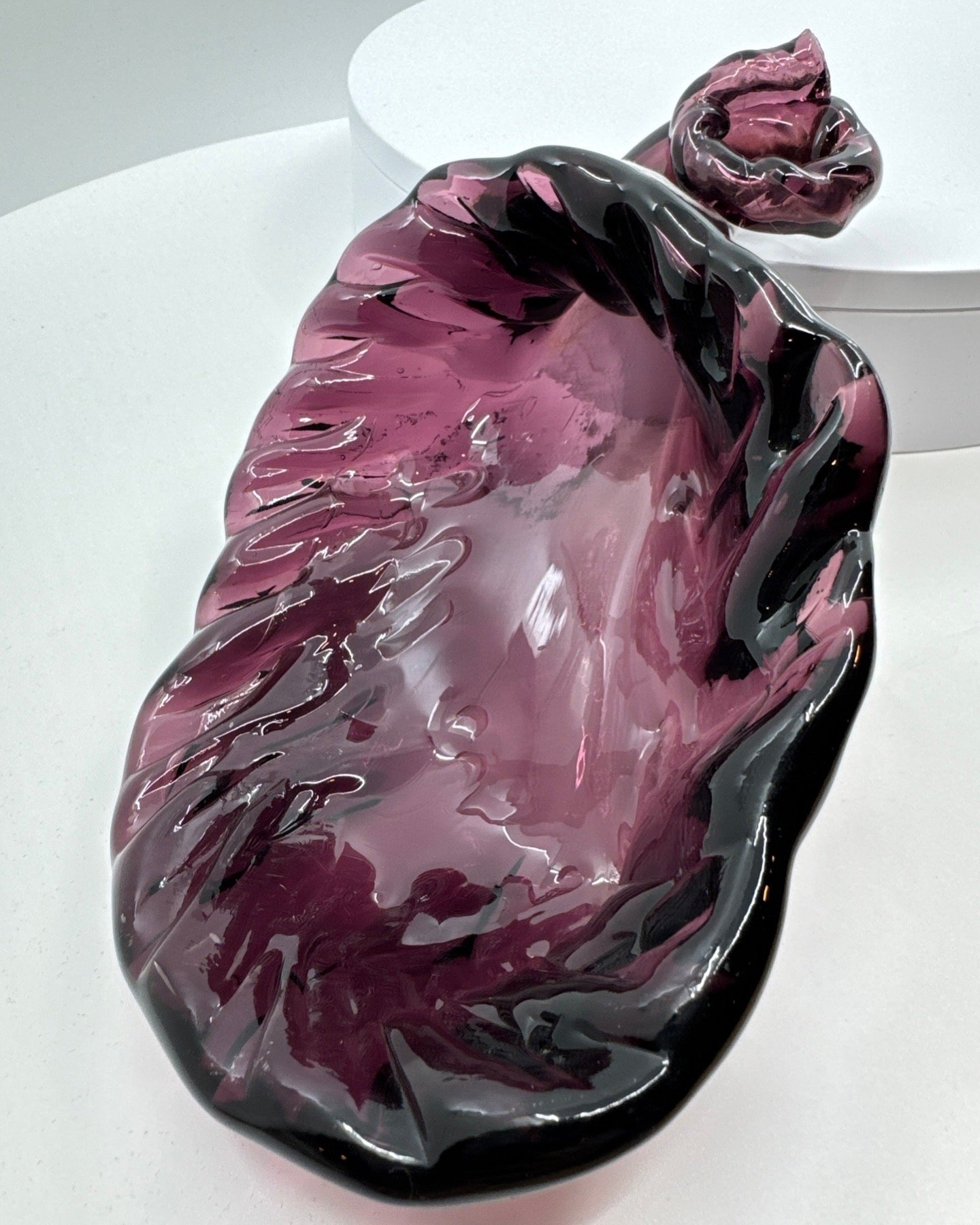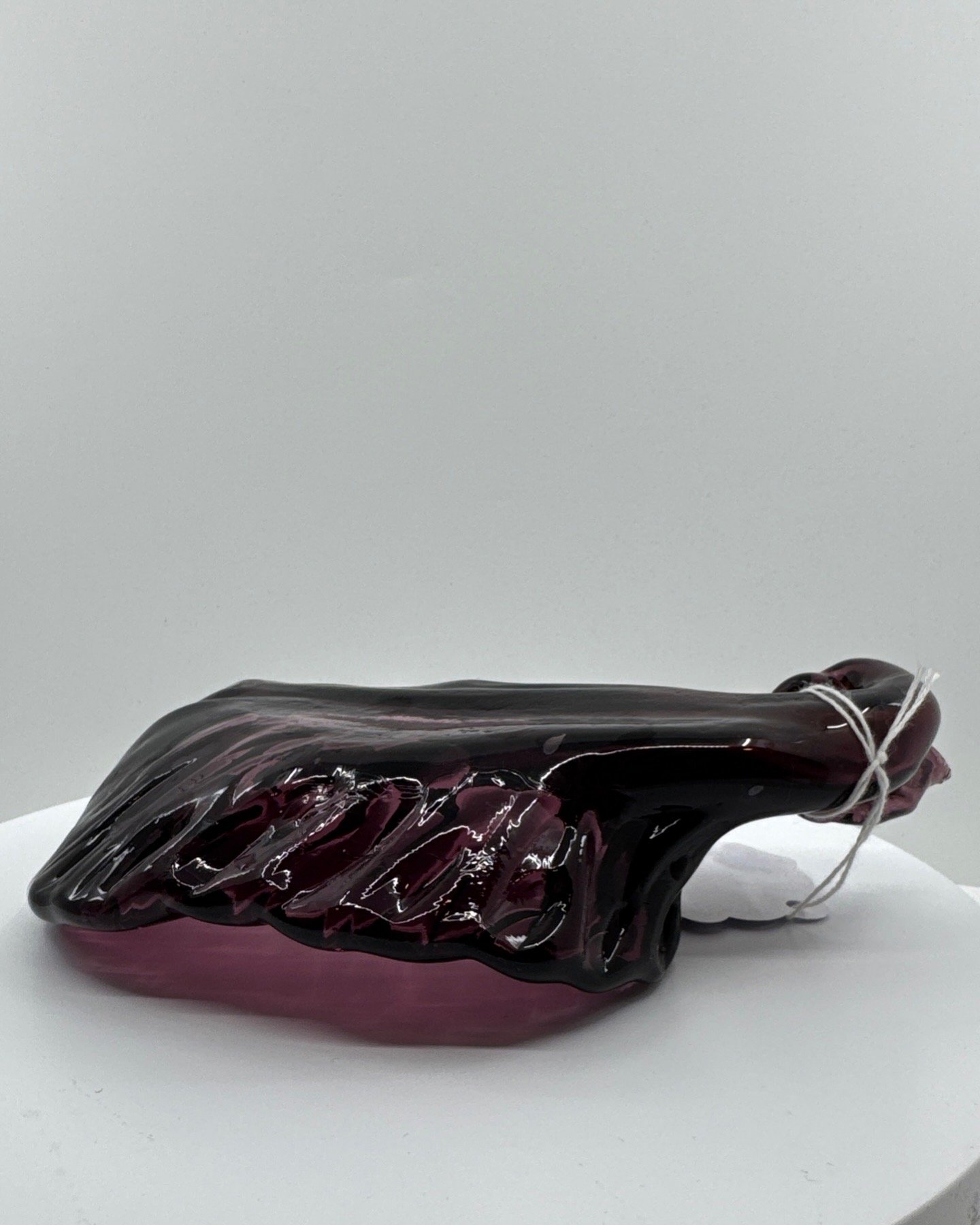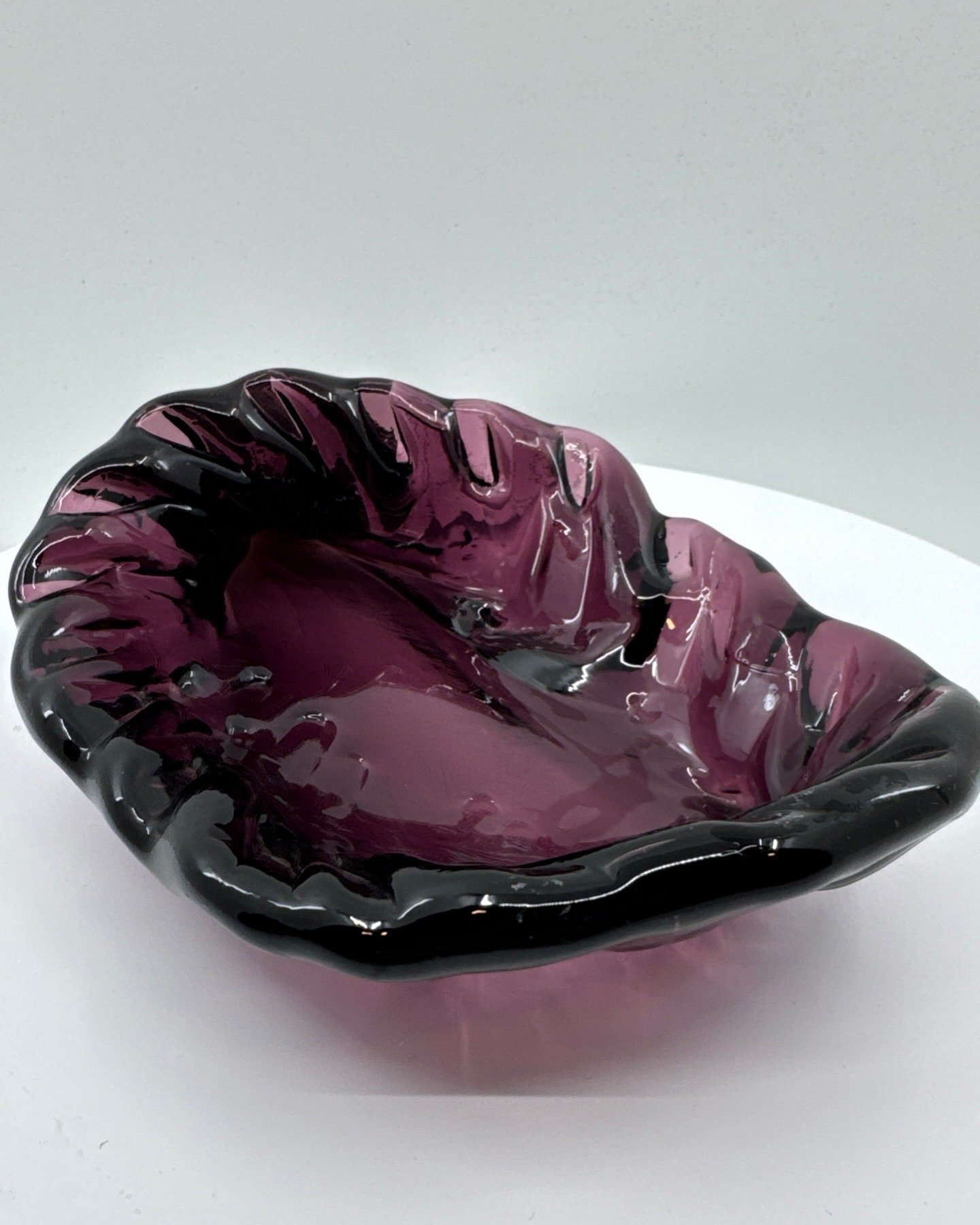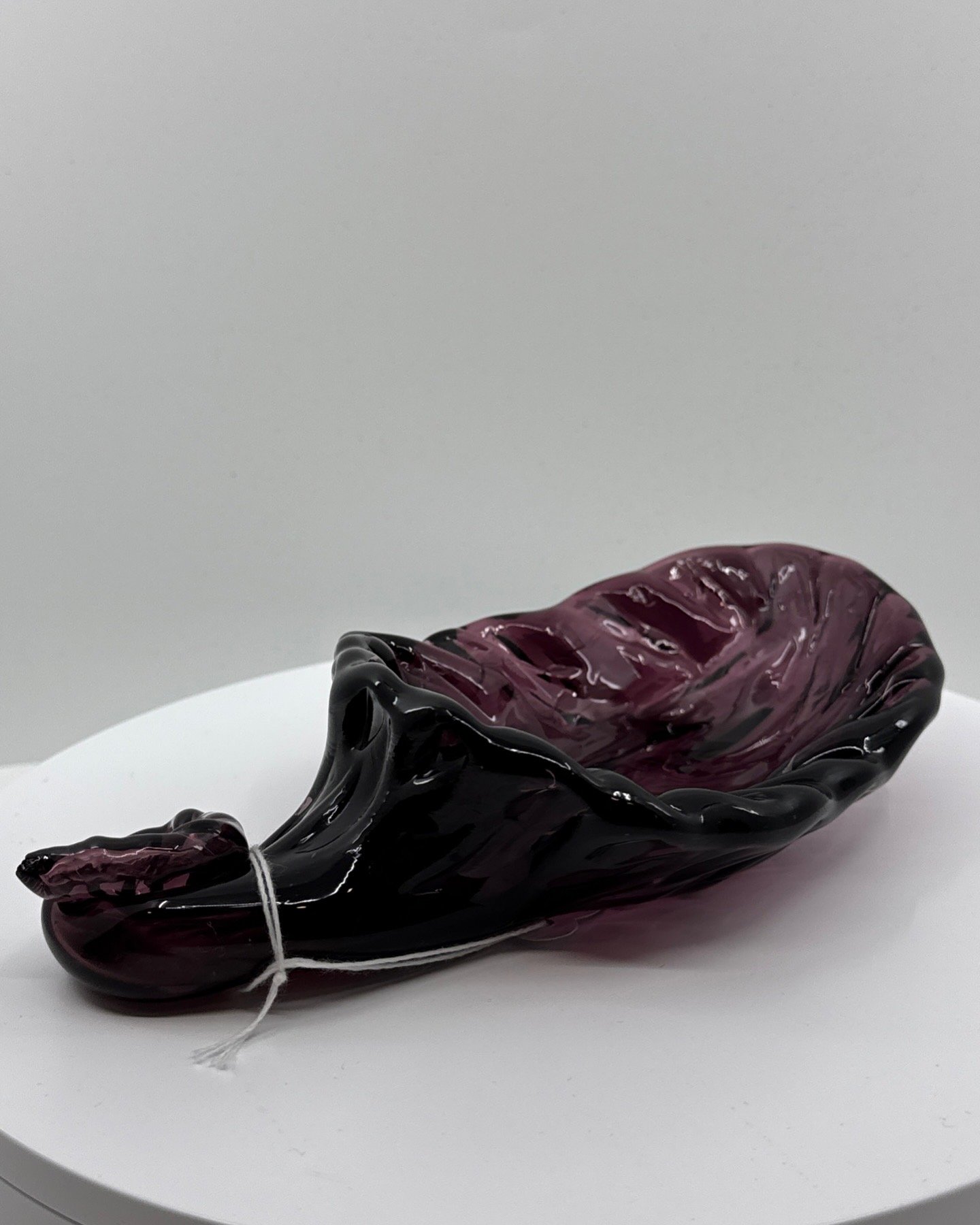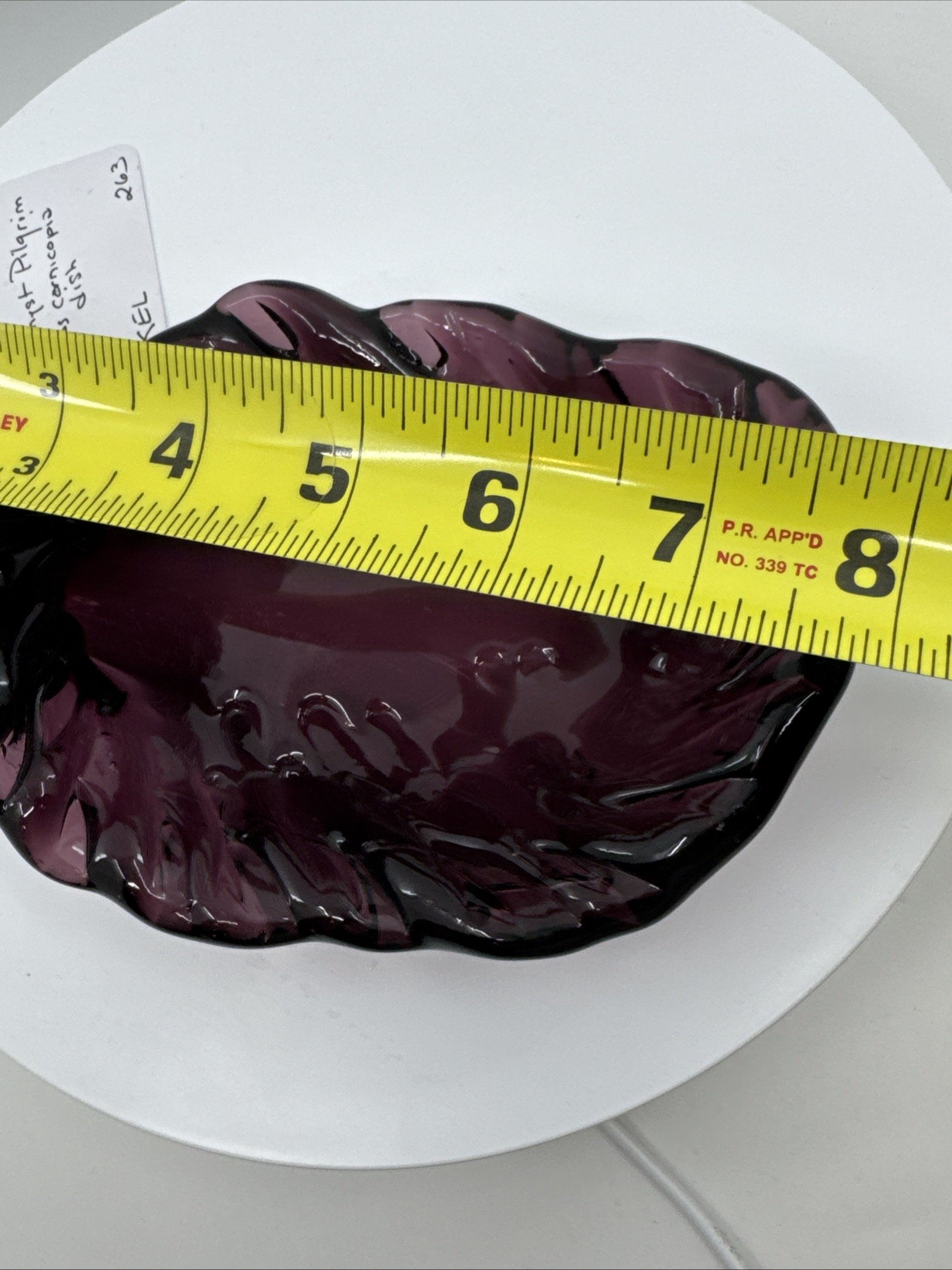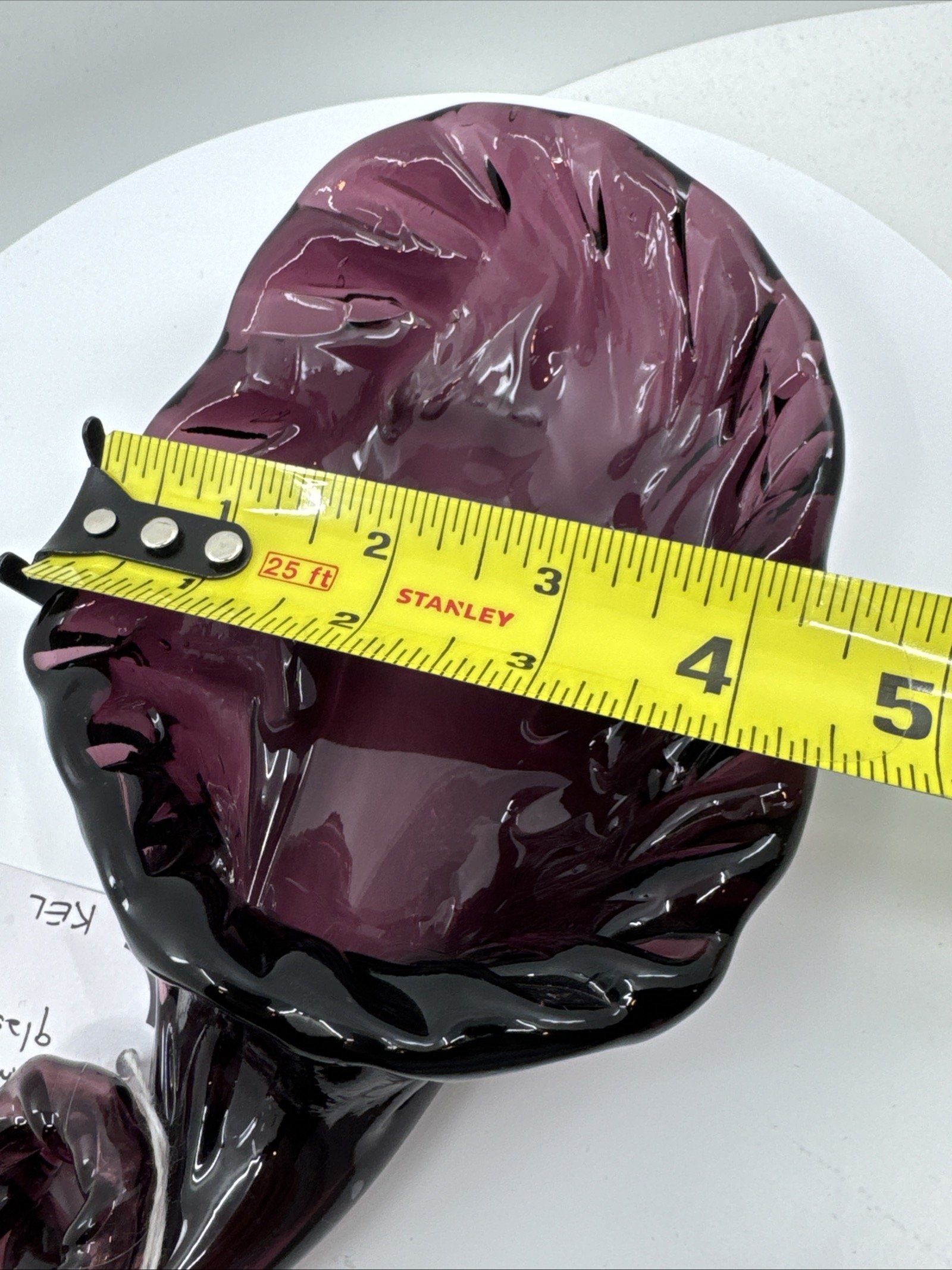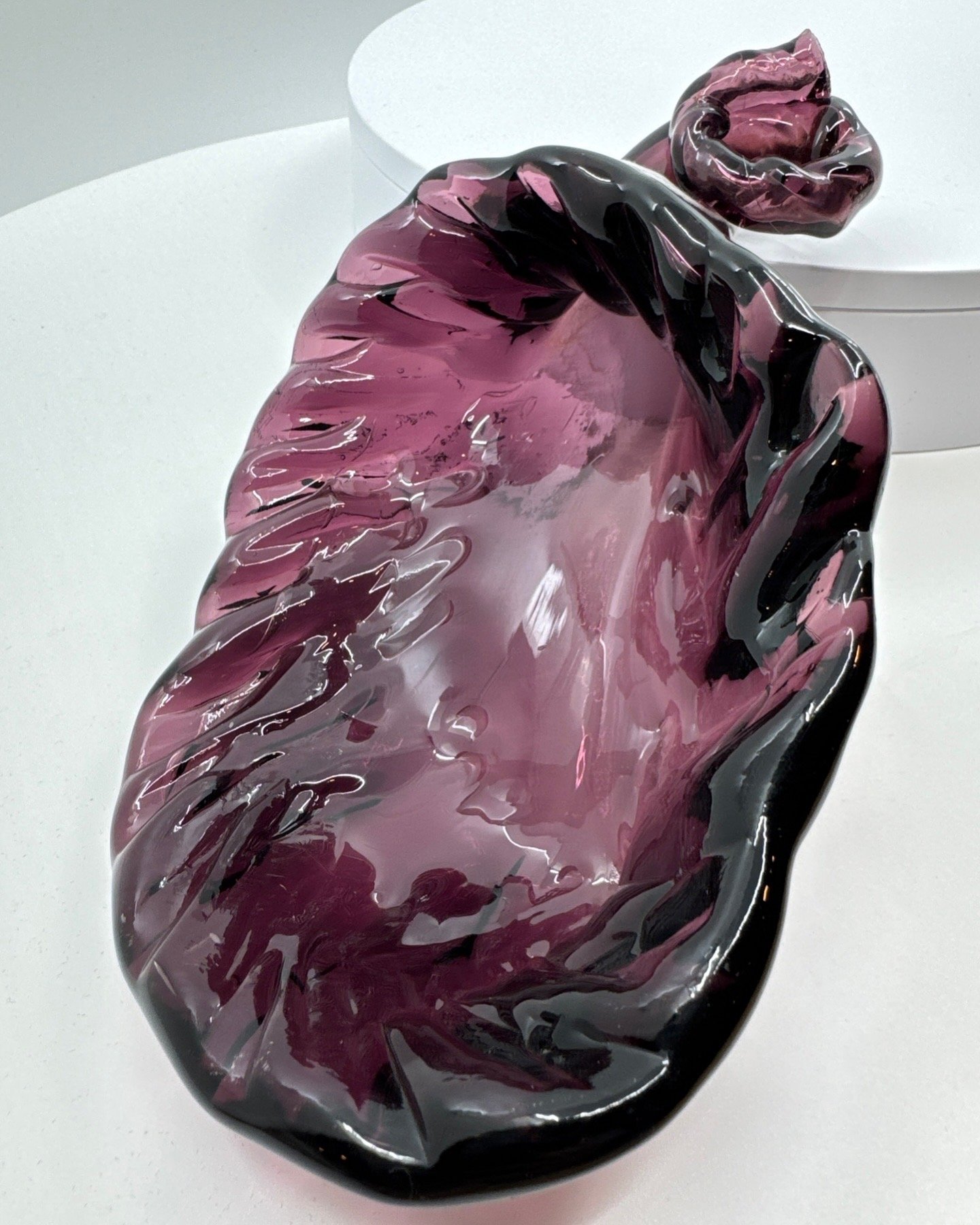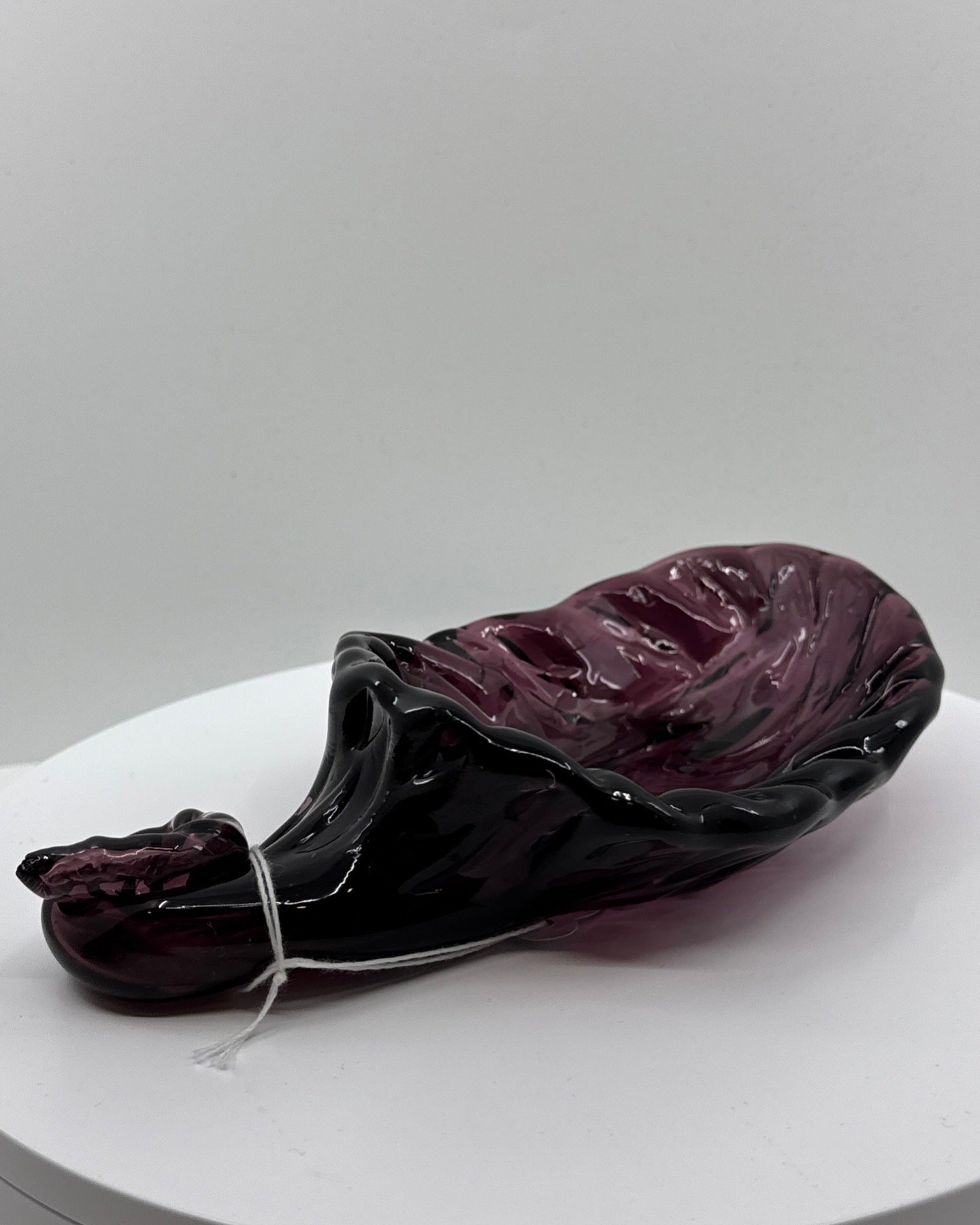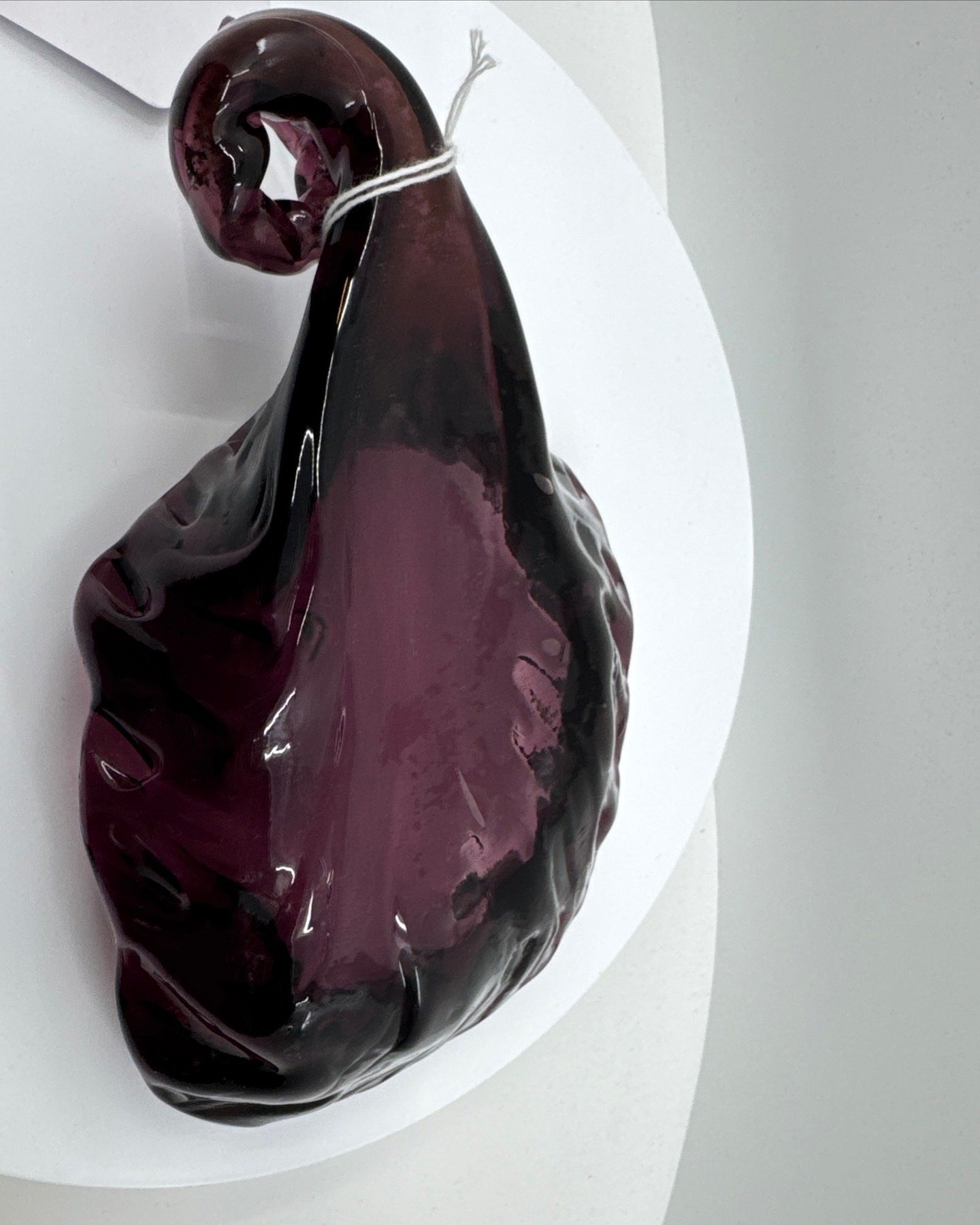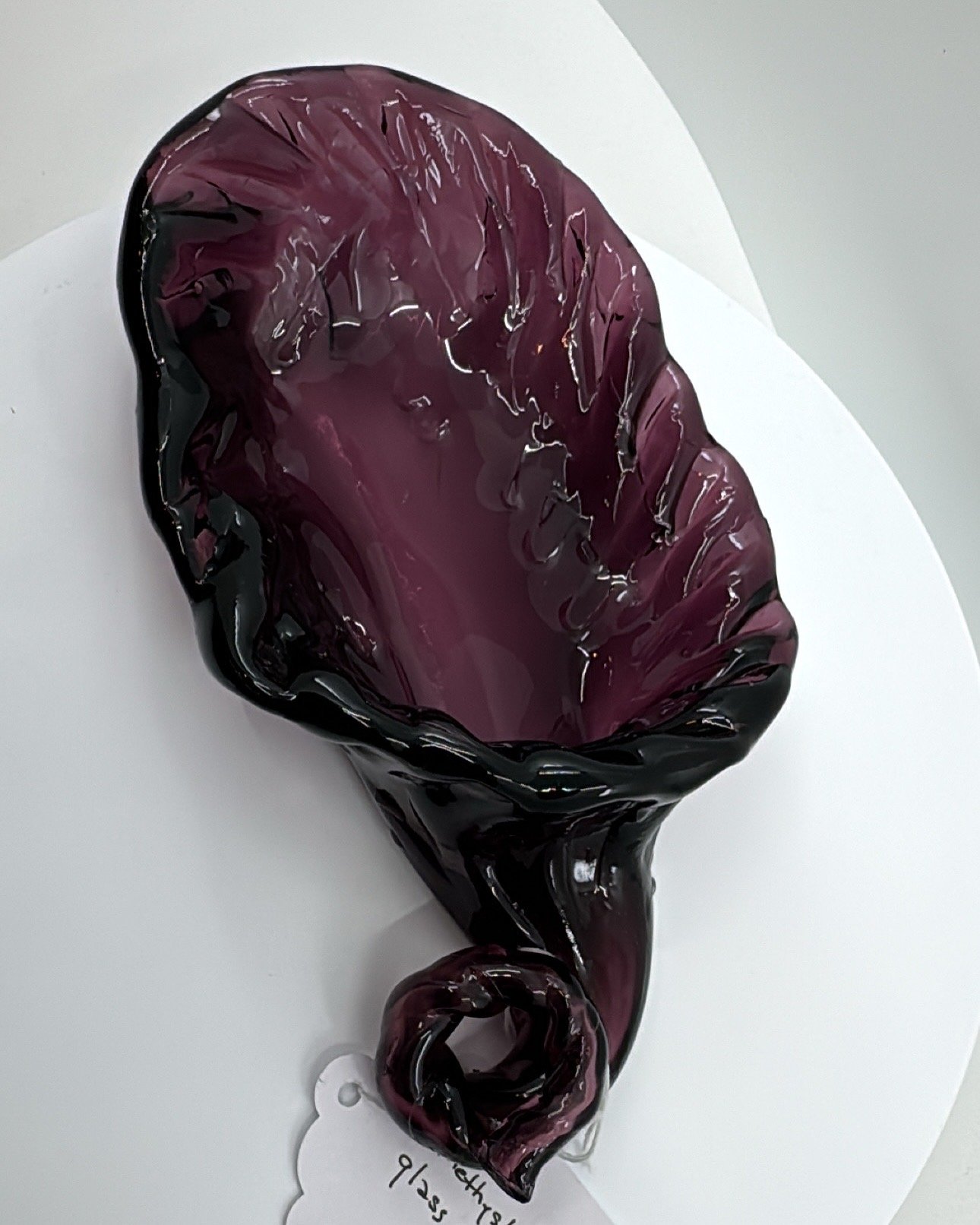
Amethyst Pilgrim glass cornucopia dish… true vintage… MCM
Amethyst Pilgrim glass cornucopia dish… true vintage… MCM… Mid-century modern… 1950 to 1959… Designed by the Italian Moretti brothers who previously designed glass for and designed major pieces for both artists: Mark Chagall and Pablo Picasso after apprenticeships with world famous glass bower and designer Murano of Venice, Italy… before being handpicked by West Virginia’s own Pilgrim glass company, the most prestigious glass company in the country at the time, the makers of many of the major collected pieces of MCM and antique glasses today.
$125 free shipping (within the continental US)
This is a true vintage MCM Amethyst Pilgrim Glass Cornucopia Dish made by the Moretti brothers in the USA. The bowl is hand-blown and features a glossy finish. The decorative cranberry (STYLE) glass and mid-century modern design make it a unique piece for any occasion. The bowl is made of amethyst glass, is a rich deep purple and has a vintage pattern that adds to its charm. It is an original piece from the 1950s and has been well-preserved. AMAZING CONDITION. Please see image gallery for closeups of any vintage / hand hewn flaws. No discernible chips or breaks or cracks that I can see.
A VERY SPECIAL ESTATE SALE COLLECTORS PIECE. A work of art.
BACKGROUND OF PILGRIM GLASS AND amethyst and cranberry glass
From Collector’s Weekly:
The Pilgrim Glass Corporation was founded in 1949, when a ceramics engineer and glass-and-pottery salesman named Alfred Knobler purchased one of his suppliers, Tri-State Glass Company of Huntington, West Virginia. By 1956, Knobler had moved Pilgrim to the town of Ceredo, half-a-dozen or so miles down the Ohio River, which gives much of the vintage glass that was produced here its nickname, river glass. Before long, Pilgrim was one of the state's premier art glass and glassware manufacturers, whose ranks included Blenko, Viking, Kanawha, Fostoria, and Rainbow.
Knobler's first success with Pilgrim was crackle glass, which his gaffers blew into vases, pitchers, decanters, candle holders, ashtrays, and tumblers. Crackle glass is achieved by a simple, ages-old technique, in which a hot piece of glass, still attached to a blowpipe, is quickly submerged in icy cold water, causing the surface of the glass to erupt in a maze of fine, irregular cracks. Though the piece will be reheated many times before being transferred from the blowpipe to a solid punty rod, the cracks remain, catching light and giving the finished object texture. In addition to crackle glass, Pilgrim also manufactured similar shapes in solid colors, as well as in a satin finish that is the result of soaking a completed piece in acid to remove the gloss on its surface.
The 1950s was also the decade when Knobler hired two Italian glassblower brothers, Alessandro and Roberto Moretti, the latter of whom had apprenticed at Murano glass factories and had executed sculptures designed by Marc Chagall and Pablo Picasso before he came to Pilgrim. The Moretti brothers brought to Pilgrim a wide repertoire of techniques, foremost among them the ability to create solid-glass figurines in the shapes of animals. The Moretti brothers' earliest animals for Pilgrim included horses, cats, and elephants; owls, rabbits, and snails are examples of later pieces. In 1963, the brothers' brother-in-law, Mario Sandon, joined the firm; all three Italians worked at Pilgrim until the mid-1980s.
By 1968, Pilgrim's plant manager, Karel Konrad, figured out how to reliably and predictably replicate the look of cranberry glass, which was a popular ware during the Victorian Era that had fallen out of favor due to its high cost and temperamental nature. Cranberry glass is produced by adding gold chloride (sometimes described as "gold salts") to a batch of molten glass. At their best, the resulting blown-glass objects have the color of rubies.
In 1970, Pilgrim introduced its Kitchen Chemistry line, which included everything from clear glass rolling pins to utilitarian jars and canisters. Around the same time, Pilgrim reproduced a type of glass first popularized in Wheeling, West Virginia, in the mid-19th century called peachblow, which transitions from yellow at the base to red on top. Heavy cased pieces were also popular with customers, and by the 1980s, thanks to the skills of glass cameo artist Kelsey Murphy, and her partner, Bob Bomkamp, moved their entire Cincinnati-based sandblasting operation to Ceredo.

